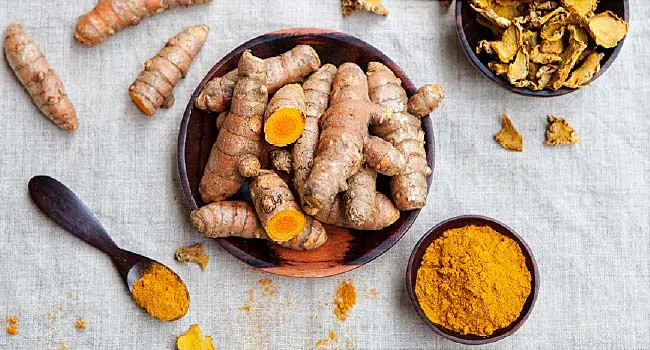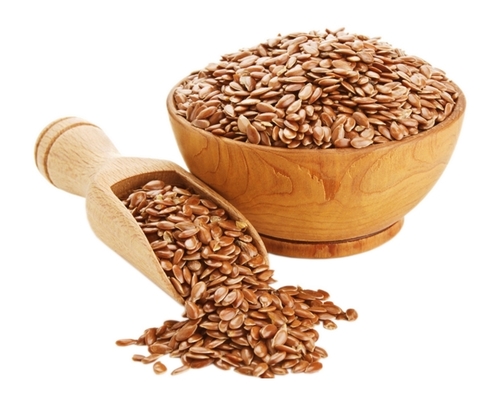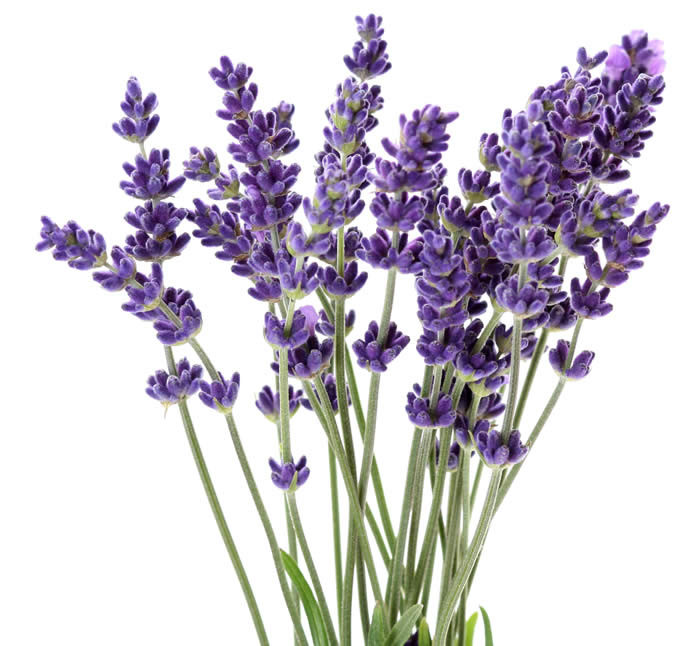1
Treatment & Solution for Coronavirus / স্ট্রোকে উচ্চ মৃত্যুহার আধুনিক জীবনযাত্রার সঙ্গে স্ট্রোকের সম্পর্ক কতটুকু?
« on: November 10, 2021, 05:43:27 PM »
স্ট্রোকে উচ্চ মৃত্যুহার
আধুনিক জীবনযাত্রার সঙ্গে স্ট্রোকের সম্পর্ক কতটুকু?
ড. আশেক মাহমুদ
স্ট্রোক কোনো সংক্রামক নয়, বৈশ্বিক মাত্রার অসংক্রামক রোগ। আমেরিকান হার্ট অ্যাসোসিয়েশনের রিপোর্টে উল্লেখ আছে, ২০১৯ সালে সারা বিশ্বে ১০১ মিলিয়ন মানুষ স্ট্রোকে আক্রান্ত হয়, এর মধ্যে ৩ দশমিক ৩ মিলিয়ন বা ৩৩ লাখ মৃত্যুবরণ করে। বাংলাদেশের চিত্রও ভয়াবহ। বিবিএস রিপোর্ট বলছে, ২০১৯ সালে ৪৫ হাজার ৫০০ জন স্ট্রোকে মৃত্যুবরণ করে, আর ২০২০ সালে একই রোগে মারা গেছে ৮৫ হাজার ৩০০; এর মানে গত বছরের চেয়ে দ্বিগুণ। অথচ তথ্যমতে, এ পর্যন্ত করোনায় মারা গেছে ২৭ হাজার ৮০০ জন। এখান থেকে প্রশ্ন জাগে, ১. কেন স্ট্রোকে এত মানুষ মারা যাচ্ছে? ২. করোনাকালে স্ট্রোকে মৃত্যুহার কেন দ্বিগুণ হলো? ৩. এটি কি শুধুই মস্তিষ্কের জটিলতা থেকে উদ্ভূত? ৪. পারিবারিক ও সামাজিক জটিলতার সঙ্গে স্ট্রোকের সম্পর্ক আছে? ৫. লাগামহীন মূল্যস্ফীতি, দারিদ্র্য ও পুঁজিবাদী ব্যবস্থার সঙ্গে স্ট্রোকের সম্পর্ক কতটুকু?
এতগুলো প্রশ্নের জবাব পেতে দরকার অনেক গবেষণা। তবু স্বল্প পরিসরে এ সম্পর্কে কিছু কথা বলার চেষ্টা করব। আমরা প্রথমে ধরেই নিই যে স্ট্রোক এক ধরনের শারীরিক রোগ। প্রাথমিকভাবে এটি শারীরিক রোগ, সত্য। চিকিৎসাশাস্ত্র বলছে, স্ট্রোক সম্পূর্ণই মস্তিষ্কের রক্তনালির জটিলতাজনিত রোগ অথবা মস্তিষ্কের রক্তবাহী নালির দুর্ঘটনাজনিত রোগ; যেকোনো বয়সেই স্ট্রোক হতে পারে। এর মানে মস্তিষ্কে রক্ত সঞ্চালনের স্বাভাবিক প্রক্রিয়ার ব্যাঘাত হলে স্ট্রোক হতে পারে বা স্ট্রোক সীমার কাছে যেতে পারে। এখান থেকেই প্রশ্ন, রক্ত সঞ্চালনে দুর্ঘটনা দিনে দিনে কেনই-বা বেড়ে চলছে? সড়ক দুর্ঘটনা বেড়ে চলছে অতিমাত্রায়, তার কারণও পরিষ্কার। কিন্তু রক্ত সঞ্চালনে দুর্ঘটনা বৃদ্ধির কারণ জানাটা অতিজরুরি। কেননা আমরা নিজের চোখে রক্ত সঞ্চালন দেখতে পাই না, কান পেতেও শুনতে পারি না সঞ্চালনের শব্দ। তবে চিকিৎসাবিজ্ঞান বলছে, স্ট্রোকের জন্য প্রধানত দায়ী উচ্চ রক্তচাপ, রক্তে খারাপ মানের কোলেস্টেরল বৃদ্ধি, ডায়াবেটিসজনিত রোগ, ধূমপান, শারীরিক স্থূলতা, দুশ্চিন্তা বা টেনশন ইত্যাদি। এ থেকে প্রথমেই বোঝা যায়, এটি শারীরিক রোগ। কিন্তু রক্তপ্রবাহের স্বাভাবিকতা বাধাগ্রস্ত করার পেছনে যে আমাদের বিভিন্ন অভ্যাস জড়িত তা স্পষ্ট।
খাদ্যাভ্যাসের কথা তো আসবেই। শিশু তরুণ-তরুণীদের কাছে ফাস্টফুড খুবই প্রিয়। এ খাবার অতি বেশি ফ্যাটযুক্ত ও ভাজা-পোড়াসমৃদ্ধ, তবে পুষ্টিসমৃদ্ধ নয়। ঘরের খাবারের চেয়ে এসব খাবার কেন এত প্রিয় হয়ে গেল? এর প্রথম কারণ আধুনিকতার মিশেল আছে ফাস্টফুডে। ইউরোপ আমেরিকার কোম্পানিগুলো ফাস্টফুডকে বৈশ্বিক খাবারে পরিণত করেছে। কেএফসি, ম্যাকডোনাল্ডসের খাবার অর্ডার পেলেই পৌঁছে যায় বাসায়। স্কুল-কলেজের সামনে এসবের সারি সারি দোকান। এদিকে বিজ্ঞান চলে গেছে বিজ্ঞাপনের হাতে। বিজ্ঞান বলছে স্বাস্থ্যকর খাবার খেতে; উল্টোপথে বিজ্ঞাপনে চলছে ফাস্টফুড, কোল্ড ড্রিংসের রমরমা প্রচার। টিভি, ফেসবুক, ইউটিউবে ভেসে ওঠে এসবের ছবি। এর মানে খাদ্যাভ্যাস তৈরি হয়েছে পুঁজিবাদী আধুনিকতার অবয়বে। এ কারণে স্ট্রোক উপযোগী খাবারের পুঁজিবাদী প্রভাব থেকে পাশ্চাত্যও মুক্ত নয়। আমেরিকান হার্ট অ্যাসোসিয়েশনের রিপোর্ট সে বার্তাই দিচ্ছে। রিপোর্টে বলা হয়েছে, ২০১৯ সালে স্ট্রোকে আক্রান্ত ও মৃত্যুর হার বেশি মাত্রায় দেখা যায় অধিক আয়ের দেশগুলোয়। যেমন উত্তর আমেরিকা, পূর্ব ইউরোপ, মধ্যপ্রাচ্য, দক্ষিণ আফ্রিকা ও দক্ষিণপূর্ব এশিয়ার দেশগুলো। এর মানে পুঁজিবাদী ভোগবাদী সমাজে স্ট্রোক মহামারী আকার ধারণ করেছে। শিক্ষার হার আর আয়ের মাত্রা বেশি হলে স্বাস্থ্য সচেতনতা বৃদ্ধি পাবে—আমরা তো এ ধারণাই করতাম। অথচ কেনার সামর্থ্য আর শিক্ষার হার বৃদ্ধি কেন স্ট্রোক ঝুঁকি কমাতে পারছে না?
আমাদের দেশ কি তাহলে সেই পথেই হাঁটছে? গত এক বছরে ৮৫ হাজার স্ট্রোকে মারা যাওয়ার সংবাদ বলেই দিচ্ছে আমরা এক জটিল পরিস্থিতিতে বসবাস করছি। এ কথা নিঃসন্দেহে বলা যেতে পারে, করোনা পরিস্থিতির সঙ্গে স্ট্রোকে মৃত্যুর হার দ্বিগুণ হওয়ার মধ্যে একটা আন্তঃসম্পর্ক আছে। তথ্যের অভাবে এর কারণ সম্পর্কে নিশ্চিত করে বলা যাচ্ছে না, তবে একটা সাধারণ ব্যাখ্যা দেয়া যেতে পারে। করোনাকালে লকডাউন সাধারণ চলাচলে ব্যাঘাত করেছে, লাখো শ্রমিক কাজ পাননি, বেসরকারি প্রতিষ্ঠানের লাখো শিক্ষক কর্মকর্তা চলমান আয় থেকে বঞ্চিত ছিল। আমাদের সামাজিক প্রেক্ষাপটে পুরুষের দায়িত্ব পুরো সংসারের ব্যয়ভার মেটানো। সেই পুরুষের আয়ের পথ বন্ধ বা বাধাগ্রস্ত হলে সংসার চালানো মুশকিল হয়ে যায়। এ বাধাগ্রস্ততাই রক্ত সঞ্চালনের স্বাভাবিক গতিকে বাধাগ্রস্ত করে। কেননা সংসার চালানো যখন কষ্টকর হয় তখন দুশ্চিন্তা ভর করাটাই স্বাভাবিক।
টেনশন বা দুশ্চিন্তা এখন পারিবারিক জীবন প্রক্রিয়ার অন্যতম উপাদানে পরিণত হয়েছে। করোনাকালে এমনিতেই কোটি কোটি মানুষের আয়ের স্বাভাবিক গতি মন্থর। এর সঙ্গে যুক্ত হয়েছে অত্যধিক মূল্যস্ফীতি। মূল্যস্ফীতি বাজার অর্থনীতিতে এমনই সংক্রামক হয়ে গেছে যে এটি দানবের মতো প্রত্যেকের ক্রয়ক্ষমতাকে গ্রাস করছে। যে অধিক ঘুষ খায়, মূল্যস্ফীতি তার কাছে তেমন কিছু না। কিন্তু এ দেশে ঘুষ খাওয়ার চাকরি করেই বা কতজন? এটা ঠিক যে হতদরিদ্র স্ট্রোক করবে না। কিন্তু যে আয়ের ধারায় চলছে, অতঃপর আয়ের পথ, সংসার চালানোর সুযোগ বধাগ্রস্ততা ভিন্ন রকম মানসিক চাপ এনে দেয়। সেই চাপ অফিসের কর্মস্থলে মাত্রাধিক কাজের চাপ আর কীভাবে আকাশচুম্বী আকাঙ্ক্ষাগুলো পূরণ করা যায়—এসব চিন্তায় অস্থির আজকের আধুনিক মানুষ। আধুনিক পুঁজিবাদী ভোগবাদী সমাজে যে মানুষ অধিক আয় আর ভোগের ব্যবস্থা করতে পারবে, সেই যেন কাঙ্ক্ষিত ব্যক্তি। যে মানুষ সেই পর্যায়ে যেতে পারে না বা যাওয়ার সম্ভাবনা দেখাতে পারে না, সেই মানুষকে পুড়তে হয় পীড়নের আগুনে। সেই পীড়ন থেকে হতে পারে রক্ত সঞ্চালনে দুর্ঘটনা। আমাদের দেশে বিবাহ বিচ্ছেদ যেভাবে বেড়ে চলছে, তাতে পীড়ন আর হতাশা আরো বেশি মাত্রায় উন্নীত হয়েছে।
একসময় এই বঙ্গে দুর্ভিক্ষে মারা যেত বহু মানুষ। এখন আর দুর্ভিক্ষ হয় না, দুর্ভিক্ষে মারাও যায় না। যে শ্রেণীর মানুষ দুর্ভিক্ষে মারা যেত, সেই শ্রেণীকে ঋণ দিচ্ছে এনজিও প্রকল্প। অতি সুদের ঋণ শোধ করতে না পারলে সে আত্মহত্যা করতে পারে, হতে পারে হূদরোগ বা স্ট্রোক। একসময় যে মানুষ চাকরি থেকে অবসর নিয়ে বাড়ি করত, এখন সেই মানুষ চাকরির শুরুতেই ঋণ নিয়ে বাড়ি বা ফ্ল্যাট কেনে, ঋণ নিয়ে গাড়িও কেনে। কারণ পুঁজিবাদী ব্যাংকিং চালু করেছে ঋণ ব্যবস্থা; কোম্পানি হাজির করেছে বিলাসসামগ্রী। ভোগবাদী এ ব্যবস্থার বার্তাই হলো, ভোগসামগ্রী নিয়ে বেঁচে থেকো আর টেনশনে থেকো প্রতিদিন। ভোগের এ প্রতিযোগিতা এতটাই সংক্রামক যে সামাজিক জটিলতা নিজেই মস্তিষ্কের জটিলতা সৃষ্টির অন্যতম কারণ হয়ে গেছে। এ জটিলতায় সবচেয়ে বেশি ভুগছে মধ্যবিত্ত ও নিম্নমধ্যবিত্ত শ্রেণী।
সেই জায়গা থেকে বলতে পারি, স্ট্রোক থেকে মুক্তির জন্য চিকিৎসার আগে জরুরি আর্থসামাজিক সংস্কার। ‘সচেতন হতে হবে’—এ রকম কথায় না গিয়ে বলতে হবে ফাস্টফুডের বিপরীতে স্বাস্থ্যসম্মত খাবারের রেস্তোরাঁ বাড়াতে হবে। দেশীয় খাবারে প্রণোদনা বাড়াতে হবে। মিডিয়া বিজ্ঞাপনে স্বাস্থ্যবিষয়ক সঠিক তথ্য প্রকাশ করতে হবে। সব শ্রেণীতেই যুগোপযোগী স্বাস্থ্যবিষয়ক পাঠ্যপুস্তক থাকতে হবে, শিখন প্রক্রিয়াকে আরো বেশি ব্যবহারিক করতে হবে। শিক্ষার বিভিন্ন স্তরে পরিবার ব্যবস্থাপনার ওপর প্রাতিষ্ঠানিক শিক্ষার ব্যবস্থা রাখা প্রয়োজন। বাজার অর্থনীতিতে মূল্যস্ফীতির লাগাম টেনে ধরতে হবে। চাহিদা অনুযায়ী উৎপাদন ও আমদানি নিশ্চিত করতে হবে। কমিয়ে ফেলতে হবে সুদের হার। কর্মক্ষেত্রে কাজের মাত্রা সহনীয় করতে বাধ্যতামূলক বিধি রেখে বাস্তবায়ন করতে হবে। রাজস্ব আদায় ও বণ্টনের ব্যবস্থা সম্পূর্ণ ডিজিটাল করে সেই রাজস্ব জনগণের অধিকার আদায়ে ব্যবহার করতে পারলে হতাশা আর দুশ্চিন্তা অনেকখানি লাঘব হবে। আমরা চাই স্ট্রোক বা হূদরোগে আক্রান্ত ও মৃত্যুর হার যেন প্রতি বছর কমতে থাকে। এটাও হতে পারে উন্নয়নের অন্যতম সূচক।
ড. আশেক মাহমুদ: সহযোগী অধ্যাপক
সমাজবিজ্ঞান বিভাগ, জগন্নাথ বিশ্ববিদ্যালয়
আধুনিক জীবনযাত্রার সঙ্গে স্ট্রোকের সম্পর্ক কতটুকু?
ড. আশেক মাহমুদ
স্ট্রোক কোনো সংক্রামক নয়, বৈশ্বিক মাত্রার অসংক্রামক রোগ। আমেরিকান হার্ট অ্যাসোসিয়েশনের রিপোর্টে উল্লেখ আছে, ২০১৯ সালে সারা বিশ্বে ১০১ মিলিয়ন মানুষ স্ট্রোকে আক্রান্ত হয়, এর মধ্যে ৩ দশমিক ৩ মিলিয়ন বা ৩৩ লাখ মৃত্যুবরণ করে। বাংলাদেশের চিত্রও ভয়াবহ। বিবিএস রিপোর্ট বলছে, ২০১৯ সালে ৪৫ হাজার ৫০০ জন স্ট্রোকে মৃত্যুবরণ করে, আর ২০২০ সালে একই রোগে মারা গেছে ৮৫ হাজার ৩০০; এর মানে গত বছরের চেয়ে দ্বিগুণ। অথচ তথ্যমতে, এ পর্যন্ত করোনায় মারা গেছে ২৭ হাজার ৮০০ জন। এখান থেকে প্রশ্ন জাগে, ১. কেন স্ট্রোকে এত মানুষ মারা যাচ্ছে? ২. করোনাকালে স্ট্রোকে মৃত্যুহার কেন দ্বিগুণ হলো? ৩. এটি কি শুধুই মস্তিষ্কের জটিলতা থেকে উদ্ভূত? ৪. পারিবারিক ও সামাজিক জটিলতার সঙ্গে স্ট্রোকের সম্পর্ক আছে? ৫. লাগামহীন মূল্যস্ফীতি, দারিদ্র্য ও পুঁজিবাদী ব্যবস্থার সঙ্গে স্ট্রোকের সম্পর্ক কতটুকু?
এতগুলো প্রশ্নের জবাব পেতে দরকার অনেক গবেষণা। তবু স্বল্প পরিসরে এ সম্পর্কে কিছু কথা বলার চেষ্টা করব। আমরা প্রথমে ধরেই নিই যে স্ট্রোক এক ধরনের শারীরিক রোগ। প্রাথমিকভাবে এটি শারীরিক রোগ, সত্য। চিকিৎসাশাস্ত্র বলছে, স্ট্রোক সম্পূর্ণই মস্তিষ্কের রক্তনালির জটিলতাজনিত রোগ অথবা মস্তিষ্কের রক্তবাহী নালির দুর্ঘটনাজনিত রোগ; যেকোনো বয়সেই স্ট্রোক হতে পারে। এর মানে মস্তিষ্কে রক্ত সঞ্চালনের স্বাভাবিক প্রক্রিয়ার ব্যাঘাত হলে স্ট্রোক হতে পারে বা স্ট্রোক সীমার কাছে যেতে পারে। এখান থেকেই প্রশ্ন, রক্ত সঞ্চালনে দুর্ঘটনা দিনে দিনে কেনই-বা বেড়ে চলছে? সড়ক দুর্ঘটনা বেড়ে চলছে অতিমাত্রায়, তার কারণও পরিষ্কার। কিন্তু রক্ত সঞ্চালনে দুর্ঘটনা বৃদ্ধির কারণ জানাটা অতিজরুরি। কেননা আমরা নিজের চোখে রক্ত সঞ্চালন দেখতে পাই না, কান পেতেও শুনতে পারি না সঞ্চালনের শব্দ। তবে চিকিৎসাবিজ্ঞান বলছে, স্ট্রোকের জন্য প্রধানত দায়ী উচ্চ রক্তচাপ, রক্তে খারাপ মানের কোলেস্টেরল বৃদ্ধি, ডায়াবেটিসজনিত রোগ, ধূমপান, শারীরিক স্থূলতা, দুশ্চিন্তা বা টেনশন ইত্যাদি। এ থেকে প্রথমেই বোঝা যায়, এটি শারীরিক রোগ। কিন্তু রক্তপ্রবাহের স্বাভাবিকতা বাধাগ্রস্ত করার পেছনে যে আমাদের বিভিন্ন অভ্যাস জড়িত তা স্পষ্ট।
খাদ্যাভ্যাসের কথা তো আসবেই। শিশু তরুণ-তরুণীদের কাছে ফাস্টফুড খুবই প্রিয়। এ খাবার অতি বেশি ফ্যাটযুক্ত ও ভাজা-পোড়াসমৃদ্ধ, তবে পুষ্টিসমৃদ্ধ নয়। ঘরের খাবারের চেয়ে এসব খাবার কেন এত প্রিয় হয়ে গেল? এর প্রথম কারণ আধুনিকতার মিশেল আছে ফাস্টফুডে। ইউরোপ আমেরিকার কোম্পানিগুলো ফাস্টফুডকে বৈশ্বিক খাবারে পরিণত করেছে। কেএফসি, ম্যাকডোনাল্ডসের খাবার অর্ডার পেলেই পৌঁছে যায় বাসায়। স্কুল-কলেজের সামনে এসবের সারি সারি দোকান। এদিকে বিজ্ঞান চলে গেছে বিজ্ঞাপনের হাতে। বিজ্ঞান বলছে স্বাস্থ্যকর খাবার খেতে; উল্টোপথে বিজ্ঞাপনে চলছে ফাস্টফুড, কোল্ড ড্রিংসের রমরমা প্রচার। টিভি, ফেসবুক, ইউটিউবে ভেসে ওঠে এসবের ছবি। এর মানে খাদ্যাভ্যাস তৈরি হয়েছে পুঁজিবাদী আধুনিকতার অবয়বে। এ কারণে স্ট্রোক উপযোগী খাবারের পুঁজিবাদী প্রভাব থেকে পাশ্চাত্যও মুক্ত নয়। আমেরিকান হার্ট অ্যাসোসিয়েশনের রিপোর্ট সে বার্তাই দিচ্ছে। রিপোর্টে বলা হয়েছে, ২০১৯ সালে স্ট্রোকে আক্রান্ত ও মৃত্যুর হার বেশি মাত্রায় দেখা যায় অধিক আয়ের দেশগুলোয়। যেমন উত্তর আমেরিকা, পূর্ব ইউরোপ, মধ্যপ্রাচ্য, দক্ষিণ আফ্রিকা ও দক্ষিণপূর্ব এশিয়ার দেশগুলো। এর মানে পুঁজিবাদী ভোগবাদী সমাজে স্ট্রোক মহামারী আকার ধারণ করেছে। শিক্ষার হার আর আয়ের মাত্রা বেশি হলে স্বাস্থ্য সচেতনতা বৃদ্ধি পাবে—আমরা তো এ ধারণাই করতাম। অথচ কেনার সামর্থ্য আর শিক্ষার হার বৃদ্ধি কেন স্ট্রোক ঝুঁকি কমাতে পারছে না?
আমাদের দেশ কি তাহলে সেই পথেই হাঁটছে? গত এক বছরে ৮৫ হাজার স্ট্রোকে মারা যাওয়ার সংবাদ বলেই দিচ্ছে আমরা এক জটিল পরিস্থিতিতে বসবাস করছি। এ কথা নিঃসন্দেহে বলা যেতে পারে, করোনা পরিস্থিতির সঙ্গে স্ট্রোকে মৃত্যুর হার দ্বিগুণ হওয়ার মধ্যে একটা আন্তঃসম্পর্ক আছে। তথ্যের অভাবে এর কারণ সম্পর্কে নিশ্চিত করে বলা যাচ্ছে না, তবে একটা সাধারণ ব্যাখ্যা দেয়া যেতে পারে। করোনাকালে লকডাউন সাধারণ চলাচলে ব্যাঘাত করেছে, লাখো শ্রমিক কাজ পাননি, বেসরকারি প্রতিষ্ঠানের লাখো শিক্ষক কর্মকর্তা চলমান আয় থেকে বঞ্চিত ছিল। আমাদের সামাজিক প্রেক্ষাপটে পুরুষের দায়িত্ব পুরো সংসারের ব্যয়ভার মেটানো। সেই পুরুষের আয়ের পথ বন্ধ বা বাধাগ্রস্ত হলে সংসার চালানো মুশকিল হয়ে যায়। এ বাধাগ্রস্ততাই রক্ত সঞ্চালনের স্বাভাবিক গতিকে বাধাগ্রস্ত করে। কেননা সংসার চালানো যখন কষ্টকর হয় তখন দুশ্চিন্তা ভর করাটাই স্বাভাবিক।
টেনশন বা দুশ্চিন্তা এখন পারিবারিক জীবন প্রক্রিয়ার অন্যতম উপাদানে পরিণত হয়েছে। করোনাকালে এমনিতেই কোটি কোটি মানুষের আয়ের স্বাভাবিক গতি মন্থর। এর সঙ্গে যুক্ত হয়েছে অত্যধিক মূল্যস্ফীতি। মূল্যস্ফীতি বাজার অর্থনীতিতে এমনই সংক্রামক হয়ে গেছে যে এটি দানবের মতো প্রত্যেকের ক্রয়ক্ষমতাকে গ্রাস করছে। যে অধিক ঘুষ খায়, মূল্যস্ফীতি তার কাছে তেমন কিছু না। কিন্তু এ দেশে ঘুষ খাওয়ার চাকরি করেই বা কতজন? এটা ঠিক যে হতদরিদ্র স্ট্রোক করবে না। কিন্তু যে আয়ের ধারায় চলছে, অতঃপর আয়ের পথ, সংসার চালানোর সুযোগ বধাগ্রস্ততা ভিন্ন রকম মানসিক চাপ এনে দেয়। সেই চাপ অফিসের কর্মস্থলে মাত্রাধিক কাজের চাপ আর কীভাবে আকাশচুম্বী আকাঙ্ক্ষাগুলো পূরণ করা যায়—এসব চিন্তায় অস্থির আজকের আধুনিক মানুষ। আধুনিক পুঁজিবাদী ভোগবাদী সমাজে যে মানুষ অধিক আয় আর ভোগের ব্যবস্থা করতে পারবে, সেই যেন কাঙ্ক্ষিত ব্যক্তি। যে মানুষ সেই পর্যায়ে যেতে পারে না বা যাওয়ার সম্ভাবনা দেখাতে পারে না, সেই মানুষকে পুড়তে হয় পীড়নের আগুনে। সেই পীড়ন থেকে হতে পারে রক্ত সঞ্চালনে দুর্ঘটনা। আমাদের দেশে বিবাহ বিচ্ছেদ যেভাবে বেড়ে চলছে, তাতে পীড়ন আর হতাশা আরো বেশি মাত্রায় উন্নীত হয়েছে।
একসময় এই বঙ্গে দুর্ভিক্ষে মারা যেত বহু মানুষ। এখন আর দুর্ভিক্ষ হয় না, দুর্ভিক্ষে মারাও যায় না। যে শ্রেণীর মানুষ দুর্ভিক্ষে মারা যেত, সেই শ্রেণীকে ঋণ দিচ্ছে এনজিও প্রকল্প। অতি সুদের ঋণ শোধ করতে না পারলে সে আত্মহত্যা করতে পারে, হতে পারে হূদরোগ বা স্ট্রোক। একসময় যে মানুষ চাকরি থেকে অবসর নিয়ে বাড়ি করত, এখন সেই মানুষ চাকরির শুরুতেই ঋণ নিয়ে বাড়ি বা ফ্ল্যাট কেনে, ঋণ নিয়ে গাড়িও কেনে। কারণ পুঁজিবাদী ব্যাংকিং চালু করেছে ঋণ ব্যবস্থা; কোম্পানি হাজির করেছে বিলাসসামগ্রী। ভোগবাদী এ ব্যবস্থার বার্তাই হলো, ভোগসামগ্রী নিয়ে বেঁচে থেকো আর টেনশনে থেকো প্রতিদিন। ভোগের এ প্রতিযোগিতা এতটাই সংক্রামক যে সামাজিক জটিলতা নিজেই মস্তিষ্কের জটিলতা সৃষ্টির অন্যতম কারণ হয়ে গেছে। এ জটিলতায় সবচেয়ে বেশি ভুগছে মধ্যবিত্ত ও নিম্নমধ্যবিত্ত শ্রেণী।
সেই জায়গা থেকে বলতে পারি, স্ট্রোক থেকে মুক্তির জন্য চিকিৎসার আগে জরুরি আর্থসামাজিক সংস্কার। ‘সচেতন হতে হবে’—এ রকম কথায় না গিয়ে বলতে হবে ফাস্টফুডের বিপরীতে স্বাস্থ্যসম্মত খাবারের রেস্তোরাঁ বাড়াতে হবে। দেশীয় খাবারে প্রণোদনা বাড়াতে হবে। মিডিয়া বিজ্ঞাপনে স্বাস্থ্যবিষয়ক সঠিক তথ্য প্রকাশ করতে হবে। সব শ্রেণীতেই যুগোপযোগী স্বাস্থ্যবিষয়ক পাঠ্যপুস্তক থাকতে হবে, শিখন প্রক্রিয়াকে আরো বেশি ব্যবহারিক করতে হবে। শিক্ষার বিভিন্ন স্তরে পরিবার ব্যবস্থাপনার ওপর প্রাতিষ্ঠানিক শিক্ষার ব্যবস্থা রাখা প্রয়োজন। বাজার অর্থনীতিতে মূল্যস্ফীতির লাগাম টেনে ধরতে হবে। চাহিদা অনুযায়ী উৎপাদন ও আমদানি নিশ্চিত করতে হবে। কমিয়ে ফেলতে হবে সুদের হার। কর্মক্ষেত্রে কাজের মাত্রা সহনীয় করতে বাধ্যতামূলক বিধি রেখে বাস্তবায়ন করতে হবে। রাজস্ব আদায় ও বণ্টনের ব্যবস্থা সম্পূর্ণ ডিজিটাল করে সেই রাজস্ব জনগণের অধিকার আদায়ে ব্যবহার করতে পারলে হতাশা আর দুশ্চিন্তা অনেকখানি লাঘব হবে। আমরা চাই স্ট্রোক বা হূদরোগে আক্রান্ত ও মৃত্যুর হার যেন প্রতি বছর কমতে থাকে। এটাও হতে পারে উন্নয়নের অন্যতম সূচক।
ড. আশেক মাহমুদ: সহযোগী অধ্যাপক
সমাজবিজ্ঞান বিভাগ, জগন্নাথ বিশ্ববিদ্যালয়




















